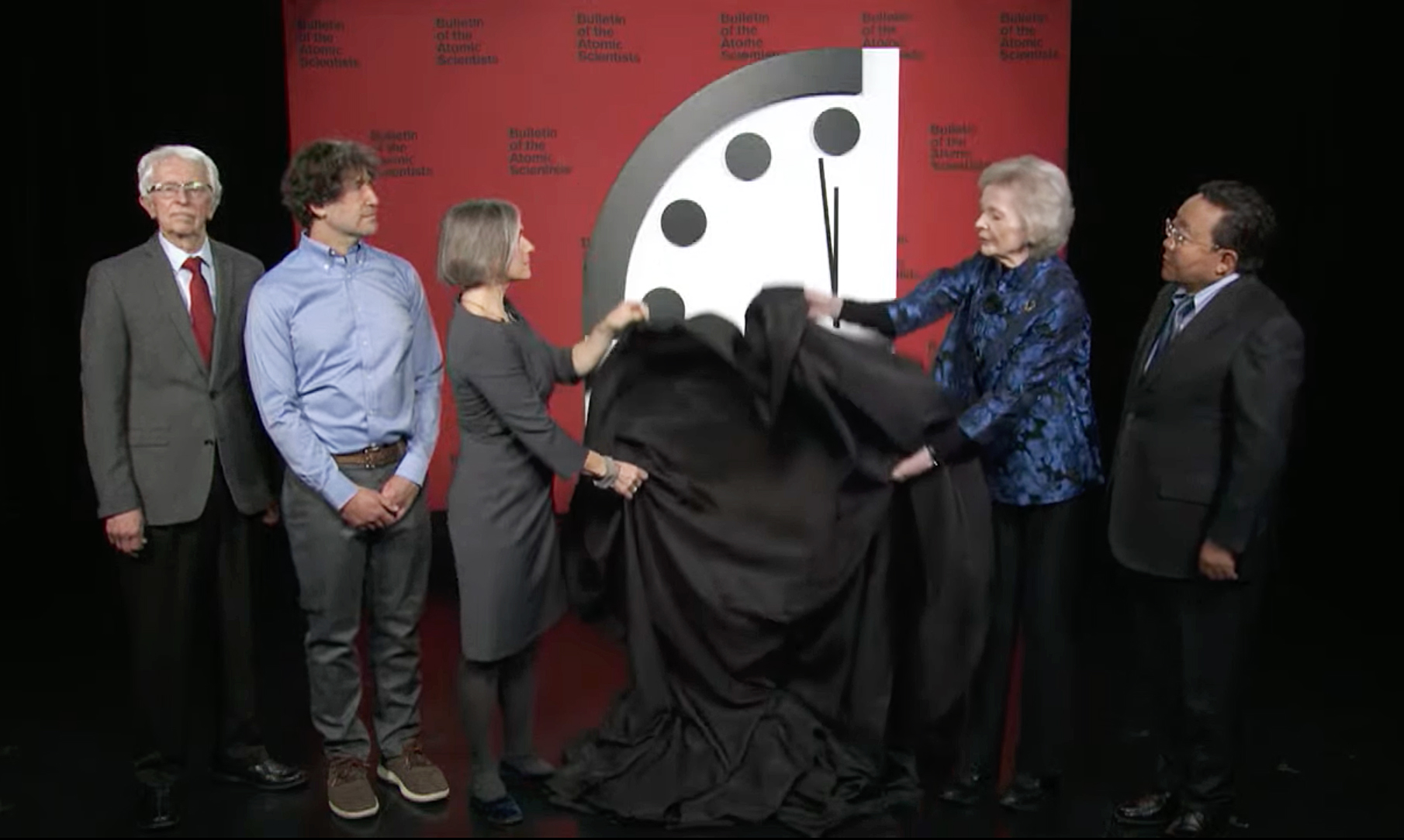2023 'Doomsday Clock': This is how close we are to the apocalypse, scientists say
The announcement is the first since Russia's invasion of Ukraine.
Scientists revealed on Tuesday that the "Doomsday Clock" has been moved up to 90 seconds before midnight -- the closest humanity has ever been to armageddon.
Bulletin of the Atomic Scientists moved the metaphorical clock up 10 seconds from where it had stayed for the past two years, citing the escalation in Russia's invasion of Ukraine in February of 2022.
"Russia's thinly veiled threats to use nuclear weapons remind the world that escalation of the conflict by accident, intention or calculation is a terrible risk," said Rachel Bronson, president and CEO of the Bulletin of the Atomic Scientists. "The possibilities that the conflict can spin out of anyone's control remains high."
Bronson noted that U.N. Secretary General António Guterres warned in August that the "world has entered a time of nuclear danger not seen since the height of the Cold War."
"The war's effects also undermine global efforts to combat climate change as countries dependent on Russian oil and gas have expanded investment in natural gas," Bronson said.
The additional concern of Russia's "false accusation" that Ukraine is planning to use radiological dispersal devices, chemical and biological weapons "take on new meaning," she added. "The continuing stream of disinformation about bio weapons laboratories in Ukraine raises concerns that Russia itself maybe thinking of deploying such weapons."
For the past 75 years, the Bulletin of the Atomic Scientists, a nonprofit media organization comprised of world leaders and Nobel laureates, has announced how close it believes the world is to collapse due to nuclear war, climate change and, most recently, the COVID-19 pandemic.
"It is a metaphor, a reminder of the perils we must address if we are to survive on the planet," the Bulletin, which created the clock, said on its website, also calling it "a design that warns the public about how close we are to destroying our world with dangerous technologies of our own making."
Tuesday's announcement was the first since Russia's invasion of Ukraine, although the panel issued a warning during its last "Doomsday Clock" news conference that Ukraine was a potential flashpoint in an increasingly tense international security environment.

"The challenges outlined by today's announcement by the Bulletin of the Atomic Scientists could not be more global in nature," Mary Robinson, the former president of Ireland and the one-time U.N. High Commissioner for Human Rights, said during Tuesday's news conference. "No one country can tackle them on their own no matter how large their population, how strong their economy or how feared their military."
Launched in 1947, scientists wanted to highlight the possibility of catastrophe to the public as it pertained to the nuclear arms race between the U.S. and the Soviet Union, according to the Bulletin, saying that "the greatest danger to humanity came from nuclear weapons" at the time.
The clock indicates how much time remains until midnight, theoretical doomsday.
At its launch, the Bulletin of the Atomic Scientists set the "Doomsday Clock" at seven minutes before midnight because artist Martyl Langsdorf, who sketched the clock that appeared on the June 1947 edition of the magazine, said “it looked good” in her eyes, the organization says.
Before 2020, the closest the hand was set to midnight was two minutes.
Shortly after Russia invaded Ukraine, the Bulletin kept the clock at 100 seconds to midnight, saying that Russian President Vladimir Putin's threats to use nuclear weapons if NATO stepped in to help Ukraine "is what 100 seconds to midnight looks like."
In September, Putin issued a thinly veiled threat that Russia would resort to using nuclear weapons in its fight against Ukraine following several setbacks.
The Russian-controlled Zaporizhzhia nuclear plant in Ukraine has come under repeated fire since Russia took it over in March 2022, increasing the risk of nuclear disaster.
Rafael Grossi, director general of the U.N.'s International Atomic Energy Agency, said last week that he is worried the world has become complacent about the potential risks to the plant.
The furthest the clock has ever been from midnight was 17 minutes in 1991 after then-President George H. W. Bush and former Soviet leader Mikhail Gorbachev both announced reductions in the nuclear arsenals of their respective countries.
"That reflected a moment when the world was seriously engaging with issues of risk and working together to mitigate it," Bronson said.
ABC News' Julia Jacobo contributed to this report.



